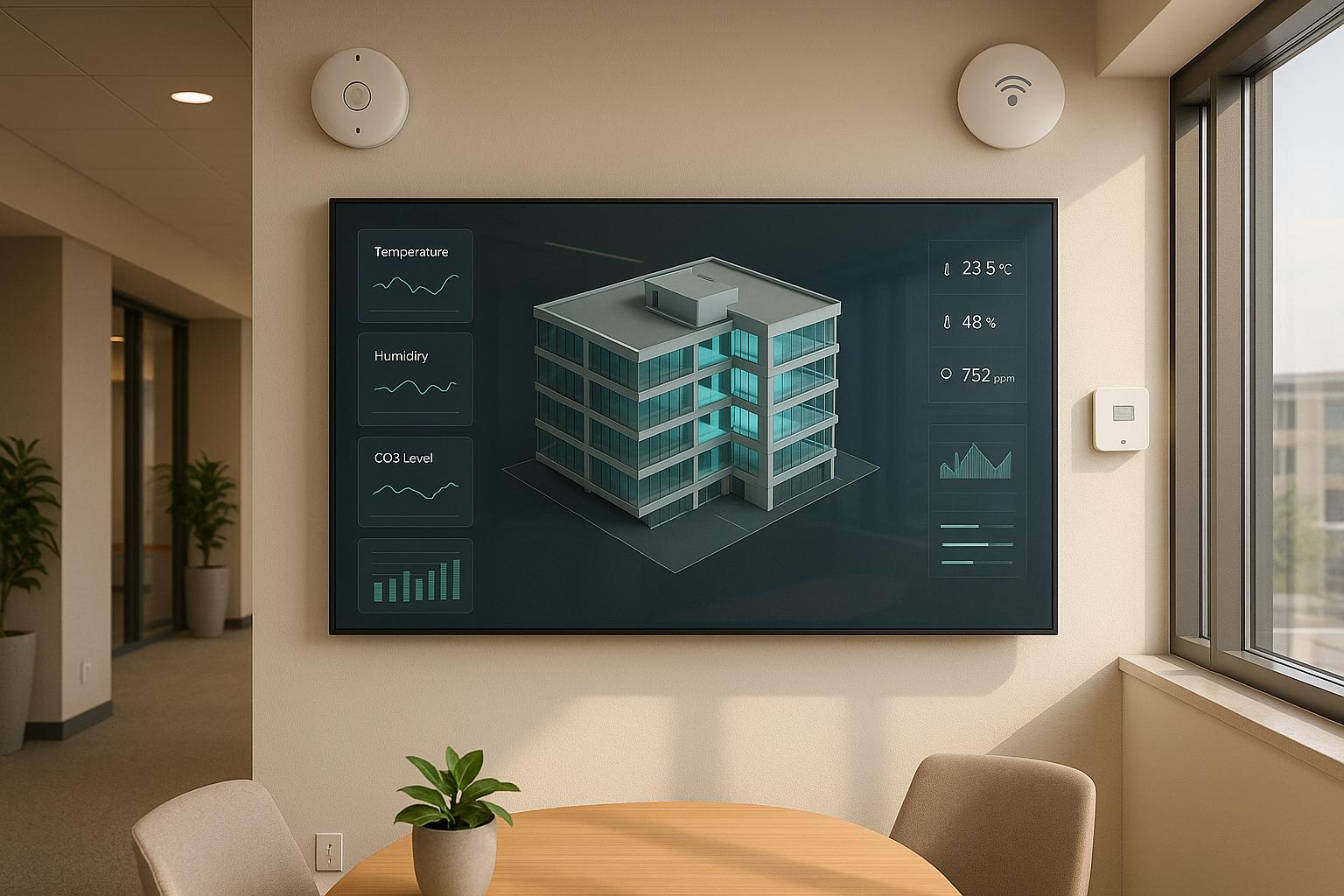Scaling Your BIM Dev Team Without Burning Cash: A Founder’s Guide to Expert Augmentation
Taher Pardawala June 25, 2025
Want to scale your BIM development team without overspending? Here’s how team augmentation can help you achieve that:
- Save money: Augmented BIM professionals cost less than full-time hires. For example, Eastern European developers charge $30–$40/hour versus $80+ in North America.
- Get instant expertise: Fill skill gaps fast with professionals experienced in Revit, clash detection, and more – no long hiring or training processes required.
- Adapt to project needs: Scale your team up or down based on project demands, avoiding long-term salary commitments.
- Boost productivity: Distributed teams with clear workflows can cut project timelines by 20–30%.
Quick Tip: Use team augmentation for short-term, specialized tasks (like MEP coordination) and hire in-house staff for long-term, strategic roles.
| Factor | Team Augmentation | Direct Hiring |
|---|---|---|
| Cost | Lower for short-term needs | Higher due to salaries and overhead |
| Speed | Quick access to skilled professionals | Slower due to recruitment/training |
| Flexibility | Scales easily with project demands | Less adaptable |
| Expertise | Instant access to specialized skills | Requires time to build expertise |
| Long-term Value | Best for temporary needs | Ideal for institutional knowledge |
Next Steps: Identify your BIM project needs, choose the right augmentation partner, and set up async workflows for smooth collaboration.
Why Building Multi-player BIM Tools is Hard – and Necessary
When to Pick Augmentation Over Direct Hiring
Deciding between team augmentation and direct hiring can significantly impact your budget and project timeline. The right choice depends on your project needs, growth stage, and long-term goals.
Team augmentation allows you to bring in external experts to fill specific skill gaps without committing to long-term employment. On the other hand, direct hiring involves building an in-house team, which requires recruitment, onboarding, and training.
The financial implications are worth considering. Replacing and training a new hire can cost six to nine times their monthly salary [2]. For startups with tight budgets, this can be a major hurdle. It’s worth noting that 70% of startups fail because they scale too quickly [3]. Understanding when augmentation is the more efficient choice versus when an in-house team is essential can help you navigate these challenges effectively.
Top Scenarios for BIM Team Augmentation
If you’re working on short-term projects with tight deadlines, augmentation often makes the most sense. For example, delivering a complex BIM model within a short timeframe doesn’t leave room for lengthy recruitment or training. Augmentation gives you immediate access to skilled professionals who are ready to contribute from day one.
This approach is particularly useful when specialized skills are required. Whether it’s advanced Revit families, parametric modeling, or clash detection workflows, augmentation lets you bring in the right expertise without the commitment of a full-time hire.
Augmentation also helps manage rapid scaling or seasonal workload fluctuations without the burden of long-term salary commitments. In fact, tech companies can cut costs by over 50% by tapping into global talent through augmentation [4].
Additionally, it’s a great way to explore new market opportunities without making permanent commitments. For instance, hiring specialists for infrastructure BIM or MEP coordination can help you test the waters in new areas without the risks of direct hiring.
When Direct Hiring Makes More Sense
While augmentation is ideal for short-term or specialized needs, direct hiring is the better option for building a stable, long-term team. Permanent hires are particularly valuable for strategic roles where stability and deep integration into company processes are essential.
A dedicated BIM team can develop a strong understanding of your workflows, foster client relationships, and contribute to a cohesive company culture. This is especially important for managing proprietary methods or handling sensitive client information. Long-term projects also benefit from having consistent points of contact who are deeply familiar with the work and the clients.
Decision Framework: Augmentation vs. Hiring
Here’s a quick comparison to help guide your decision:
| Factor | Team Augmentation | Direct Hiring |
|---|---|---|
| Cost | Lower for short-term needs; pay only for what you use | Higher due to salaries, benefits, and overhead |
| Speed | Quick access to skilled professionals | Slower due to recruitment and training processes |
| Flexibility | Scales easily with project demands | Less adaptable; resizing the team can be difficult |
| Control | Allows project oversight while integrating external talent | Offers full control over team and processes |
| Expertise | Provides instant access to specialized skills | Requires time and investment to build expertise |
| Long-term Value | Best for temporary or project-specific needs | Ideal for building institutional knowledge and stability |
The duration of your project is a key factor. Short-term projects tend to benefit from augmentation, while longer-term engagements may justify the investment in a permanent team. A dedicated in-house team can develop deeper institutional knowledge over time, which is invaluable for complex or ongoing projects.
Budget constraints and the availability of local talent also influence the decision. Augmentation is often a smart choice for startups or small businesses, especially when local expertise is limited and global talent can fill the gap.
With global spending on staff augmentation expected to reach $81.87 billion by 2025 [6], it’s clear that flexible staffing solutions are becoming increasingly popular for specialized roles like BIM development. By aligning your approach with your project’s needs, budget, and goals, you can create a team structure that works for you.
How to Find and Select the Right BIM Augmentation Partner
Choosing the right BIM augmentation partner is a critical step in ensuring your project’s success. The wrong choice can lead to delays, budget overruns, and even damage to client relationships. On the other hand, the right partner becomes an extension of your team, bringing expertise and delivering results that help your business thrive.
"How well you evaluate your potential BIM partners on critical criteria such as expertise, collaboration, technology, references, and compliance, defines the success and profitability of your BIM projects." [7]
Selecting a partner isn’t just about ticking boxes – it’s about finding someone who aligns with your company’s standards and values. This requires a careful assessment of their technical abilities, communication skills, and operational readiness.
Key Criteria for Partner Evaluation
Technical expertise is the cornerstone of a successful BIM partnership. Look for partners with relevant industry experience. For example, a firm specializing in commercial buildings might not be the right fit for infrastructure projects. Also, consider how long they’ve been providing the specific BIM services you need.
Check for essential certifications, such as Autodesk Certified Professional, to ensure their team meets industry standards. Make sure they’re proficient in tools like Autodesk Revit, AutoCAD, and Navisworks. Additionally, ask if they can handle advanced BIM applications like 4D (time-based) and 5D (cost-based) modeling, as these can significantly enhance project efficiency and value.
Smooth collaboration is just as important as technical skills. Evaluate their communication tools, time-zone compatibility, and how well their work culture aligns with yours. While overlapping time zones can facilitate real-time collaboration, strong asynchronous processes are equally critical for working across geographic boundaries.
Scalability is another factor to consider. Your partner should be able to quickly adjust resources to meet changing project demands. It’s also wise to confirm they have contingency plans in place for unexpected absences or challenges.
Best Practices for Due Diligence
Once you’ve outlined your evaluation criteria, performing due diligence is essential to confirm a partner’s capabilities. Start with a detailed portfolio review. Don’t just skim project descriptions – request case studies that showcase their approach to problem-solving and the outcomes of projects similar to yours in complexity and scope.
For example, TrueCADD’s use of 4D BIM simulation to achieve significant cost savings is a case study that demonstrates the value of a skilled partner [7].
References offer another layer of insight. Reach out to past clients to learn about their experiences with the partner, focusing on project delivery, communication quality, and how they handled challenges. This feedback can reveal details that aren’t evident in marketing materials.
Pilot projects can serve as a low-risk way to assess a potential partner. By starting with a small, well-defined project, you can evaluate their technical skills, communication style, and reliability before committing to a larger engagement.
Don’t overlook legal and compliance checks. Ensure the partner has all necessary licenses and certifications for their region. Review contracts carefully to confirm they’re fair and legally sound.
Lastly, examine their internal processes and documentation practices. A reliable partner should manage BIM model coordination effectively, resolve clashes efficiently, and maintain detailed records of decisions and actions. This level of organization is especially important for complex projects involving multiple stakeholders.
Taking the time to thoroughly evaluate potential partners can save you from costly mistakes down the road. A well-chosen BIM augmentation partner doesn’t just support your projects – they become a strategic asset that strengthens your team and drives long-term growth without the overhead of permanent hires.
sbb-itb-51b9a02
Setting Up Async Workflows for Distributed BIM Teams
Getting your workflows in order is just as important as choosing the right partner to expand your BIM team effectively. Managing a distributed BIM team comes with its own challenges, especially when it comes to collaboration and communication. In fact, 48% of remote employees report difficulties in these areas[11]. Setting up strong asynchronous (async) processes from the start can be the difference between smooth project execution and unnecessary delays.
The goal is to create systems that allow work to continue even when team members are offline. Offshore modelers shouldn’t have to wait for a project manager in another time zone to approve tasks. These strategies tie back to earlier discussions about leveraging the right expertise through effective partnerships.
Picking the Right Tools for BIM Collaboration
Choosing the right tools is essential for seamless collaboration in BIM projects. Revit is a cornerstone of most BIM workflows, boasting a 4.6/5 rating on both Capterra and G2 from hundreds of users[8]. However, Revit alone isn’t enough – you’ll also need cloud-based platforms for real-time coordination.
- Autodesk Construction Cloud acts as a central hub for data management and project coordination. While pricing details aren’t publicly available, it’s widely regarded as a comprehensive solution[8].
- Trimble Connect offers both free and paid plans, with subscriptions starting at $12.99 per user per month[8].
- Navisworks, known for its clash detection and project overview capabilities, comes in two versions: Simulate ($140 per month) and Manage ($340 per month). It holds a 4.7/5 rating on Capterra[8].
- Revizto focuses on clash detection and collaboration, with a 4.3/5 rating on Capterra. Pricing isn’t disclosed publicly[8].
Beyond BIM-specific tools, a strong communication stack is critical. Slack, with its 4.7/5 rating on Capterra, integrates seamlessly with most BIM platforms[9]. For asynchronous updates, Loom is a great option, also rated 4.7/5, allowing team members to record and share video updates without needing live meetings[9].
Setting Up Communication Protocols
Clear communication protocols are crucial for avoiding confusion in distributed BIM projects. Start by establishing standard response windows based on overlapping work hours. For urgent matters, responses should be expected during these overlap periods, while non-urgent updates can have a 24-hour turnaround[11].
Use status indicators on messaging platforms to show when team members are genuinely available, reducing frustration over delayed replies. Daily or weekly check-ins can also help. Instead of live stand-ups, consider recorded video updates where team members share progress, highlight blockers, and ask questions on their own schedule[11].
Centralize your BIM standards, modeling conventions, and quality criteria in a shared location accessible to everyone. Tools like Notion or Confluence work well for this purpose[10]. For meetings, provide recordings and summaries so everyone stays informed, even if they can’t attend live. Automated transcription tools can capture key decisions and action items, and written summaries should be distributed within 24 hours of any live meeting[11].
To show respect for everyone’s time zones, rotate meeting schedules. For example, if a weekly call is always at 9 AM EST, offshore team members may have to join late at night. Alternating meeting times demonstrates consideration for your team’s work-life balance[11].
Maximizing Team Productivity
Distributed BIM teams thrive by balancing asynchronous updates with targeted real-time sessions. Async workflows handle routine tasks, while synchronous meetings are reserved for complex problem-solving that benefits from live discussion[11].
Use overlapping core hours for high-priority activities like clash resolution or design reviews. Tools like World Time Buddy or Every Time Zone can help identify these optimal windows[11]. Project management platforms such as Asana, Trello, or ClickUp allow team members to track progress, flag issues, and request reviews without constant meetings[11].
Focus on performance-based evaluations rather than tracking hours. Measuring deliverables, milestone completion, and problem-solving abilities builds trust and allows team members to work during their most productive hours[11]. Instituting no-meeting days can also boost productivity, giving team members uninterrupted time for focused work on complex BIM tasks[11].
Real-World Examples
The success of async workflows is evident in projects like the Zayed National Museum in Abu Dhabi. This 75,000-square-meter (approximately 807,000-square-foot) complex was completed by a blended team of onshore leads and offshore modelers. With daily stand-ups, BIM 360 for data sharing, and ISO 19650-based checklists, the project was delivered on time and under budget, with fewer coordination errors[14].
Another success story comes from a 150-kilometer (approximately 93-mile) highway project in Saudi Arabia. Offshore teams handled rigorous model checks, clash detection, and daily updates to local stakeholders. The project finished ahead of schedule, saving an estimated 25% compared to an onshore-only approach while resolving hundreds of potential clashes before construction began[14].
"As BIM centers on collaboration, successful teams need to be equipped to deal with it."
– Deepak Maini, Autodesk Expert Elite[12]
Ensuring Quality in Distributed Teams
With distributed teams, quality management becomes even more important. Establish clear model validation processes and review criteria so offshore team members can work independently while meeting project standards. Cloud-based BIM platforms enable real-time quality checks and centralized reviews[13].
Regular internal audits can help catch issues early. Weekly model reviews using your chosen collaboration platform ensure compliance with BIM standards and project requirements[13]. By combining these practices with efficient async workflows, you’ll be well-equipped to optimize your BIM team’s performance and cost-effectiveness.
Cost and Productivity Benchmarks for BIM Augmentation
When weighing the benefits of team augmentation, the cost and productivity advantages of BIM augmentation stand out. By leveraging this approach, companies can cut costs by 5%–10% while significantly enhancing team capabilities [15]. This balance of savings and expertise makes it a practical choice for managing both budgets and project demands.
Cost Guidelines for BIM Team Augmentation
BIM augmentation often proves more economical than traditional hiring when you consider the broader employment landscape. It eliminates expenses tied to recruitment, onboarding, training, and overhead. Instead, businesses gain flexible access to skilled professionals without the long-term commitments of in-house hiring [5]. This approach also reduces HR and compliance-related burdens, allowing companies to focus on project outcomes [1].
Another advantage is the predictability it brings to budgeting. Since BIM augmentation is typically structured around fixed project fees or transparent hourly rates, financial planning becomes much more straightforward.
But the benefits go beyond cost savings – there are significant productivity gains to consider.
Measuring Productivity and ROI
To gauge the impact of BIM augmentation, look at metrics like deliverable completion rates, error reduction, and faster project timelines. Construction productivity, which measures the ratio of output to input, is a critical benchmark [16]. Even a modest 1% improvement in this area could save the industry billions annually [16]. With augmented BIM teams, project timelines can shrink by as much as 20% to 30% [19].
Return on investment (ROI) from BIM augmentation isn’t just about cutting costs. It’s about improving efficiency through reduced rework, quicker project delivery, and the ability to take on more projects. As Peter Drucker famously said:
"What gets measured, gets improved" [17].
By establishing baseline performance metrics before adopting BIM augmentation and tracking key performance indicators (KPIs) over time, companies can better understand its full value.
Beyond ROI, there are practical strategies to further optimize costs without sacrificing quality.
Ways to Cut Costs Without Hurting Quality
The goal of BIM augmentation should be to maximize value, not just reduce expenses. For instance, interoperable BIM systems can trim project budgets by 7% to 15% [19]. These systems improve efficiency by flagging design conflicts early, reducing costly on-site rework [18]. Rework alone accounts for an estimated 5% to 10% of total project costs [19].
Incompatible software, on the other hand, can lead to massive hidden costs – billions annually [19]. Working with augmentation partners who use compatible systems and follow established BIM standards helps avoid these pitfalls. Companies adopting interoperable workflows have reported up to 20% savings on software-related expenses [19].
To get the most value, focus on high-impact tasks like detailed modeling, clash detection, and quantity take-offs. BIM’s ability to produce precise quantity take-offs leads to better budgeting and less material waste [20]. Real-world examples illustrate this impact. During the Sydney Opera House renovation, interoperable BIM systems helped the team avoid duplication and delays, finishing early and saving approximately $8 million [19]. Similarly, London’s Crossrail Project saved over 10% of its $21 billion budget by using interoperable systems [19]. Additionally, 75% of companies that implemented BIM reported positive returns, largely due to fewer errors [20].
Conclusion: Smart Scaling with BIM Team Augmentation
BIM team augmentation offers a practical way to adapt to fluctuating project demands by providing on-demand access to specialized expertise. Instead of committing to lengthy and costly hiring processes, this approach allows you to bring in the skills you need, exactly when you need them.
Studies show that effective BIM implementation can cut project timelines by as much as 50%[22]. With augmentation, your team becomes more dynamic – scaling up or down based on project requirements rather than rigid staffing plans.
However, the real key to success lies in how well you integrate augmented teams. To make this work, it’s essential to choose experienced partners, establish clear communication across time zones, and prioritize high-value BIM tasks[21]. When done right, these teams blend seamlessly into your organization, offering fresh expertise without disrupting existing workflows.
The payoff is clear: augmented teams can significantly improve project performance. By combining these benefits with the flexibility of scaling on demand, you’re not just growing your capabilities – you’re doing it in a smarter, more efficient way.
To get started, identify areas where your projects are slowing down, outline the BIM skills you need, and test the waters with a pilot project. This phased approach helps you refine workflows and communication strategies while proving the value of your augmented team before scaling up further. It’s a step-by-step path to building a stronger, more adaptable operation.
FAQs
What should I consider when choosing between augmenting my BIM team or hiring directly?
When choosing between team augmentation and direct hiring for your BIM projects, it’s essential to weigh factors like project duration, budget, and staffing flexibility. If you’re working on a short-term project or need quick access to specialized skills, augmentation can be a more adaptable and cost-efficient option. On the flip side, direct hiring works better for long-term needs where you want a fully dedicated, in-house team.
You should also think about your future growth plans and how much oversight the project demands. Augmentation offers quicker onboarding and greater flexibility, while direct hires provide stronger integration into your company’s workflows and culture. Match your decision with your project timelines, workload fluctuations, and overall business goals to make the best choice for your needs.
What’s the best way to evaluate and select the right BIM augmentation partner for your company?
To find the right BIM augmentation partner, start by considering their expertise, industry background, and technological strengths. Their skills should directly match your project requirements and align with your company’s objectives.
Take the time to check their references and examine their communication methods. Clear and effective communication is essential for smooth teamwork. Additionally, a shared mindset and compatibility in work culture can significantly enhance collaboration.
Finally, evaluate their track record in delivering high-quality results on schedule and within budget. Focusing on these factors will help you select a partner who can seamlessly integrate with your team and contribute to your project’s success.
What are the best tools and strategies for setting up effective asynchronous workflows in distributed BIM teams?
To create effective asynchronous workflows for distributed BIM teams, begin by setting up standardized systems for organizing files, prioritizing tasks, and tracking progress. These systems help keep everyone on the same page and reduce potential confusion.
Incorporate cloud-based collaboration tools and version control systems into your workflow. These tools make it easy to share models, provide real-time updates, and manage changes efficiently, keeping the team aligned no matter where they are. Lastly, put clear communication guidelines in place to define expectations, reduce delays, and ensure smooth coordination across all team members.








Leave a Reply